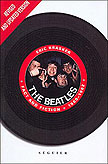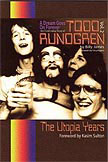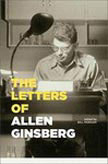 Book Reviews: April 2010

Have you ever wondered about the real stories behind the mythology of The Beatles formative years? What is the truth about the Polydor sessions and the Star Club recordings? Was there really a Raymond Jones? How did Stuart Sutcliffe really die? Why was Pete Best fired? The Beatles may be the most documented band in the world. And yet, facts are blurred with conjecture, exaggerations, fiction, myths, rumours, and lies when it comes to those early days, when the group was on the brink of fame. "The Beatles Fact And Fiction 1960-1962" by Eric Krasker cuts through the embellishments and leaves the readers with only the truth about these five famous Beatles tales. Author Eric Krasker, a French police inspector, uses his professional skills to investigate each of these stories. He digs and digs until only the facts are visible. Packed with 100 illustrated pages (b&w and colour), "The Beatles Fact And Fiction 1960-1962" backs up his exhaustive research with document after document. "The Beatles Fact And Fiction 1960-1962" is an impressive reference guide with its 438 pages. Statements are corroborated and expanded with meticulously detailed footnotes. An impassioned Mr. Krasker leaves no stone unturned. At the end of each chapter, the reader is left with little doubt about what really happened. The author refutes previous statements and conclusions made by other authors about the Polydor and Star Club sessions. However, his assertions, sometimes controversial, are backed with documents, photographs, and other evidence that he has uncovered. [I must state here for the record that some of my research was used in a portion of the Star Club Tapes chapter.] "The Beatles Fact And Fiction 1960-1962" is one of the best reference books ever written. If you are a serious Beatles scholar or a casual fan, this book is a "must-have." About Eric Krasker: Eric is an honoured police inspector in France and a dedicated Beatles fan. He utilizes his investigative skills to dig out the facts about the early Beatles in this wonderful book. In 2005, he co-authored (with Jean-Claude Hocquet) La France et les Beatles Volume 1 - La discographie originale (1962-1970). Eric Krasker and I worked together on an article for Beatlology Magazine about The Star Club Tapes. As a Beatles fan and writer and a retired, 34-year member of the police and intelligence communities, I highly recommend Eric's books in French and/or English.
Billy James long awaited part two of his Todd Rundgren biography series has recently been released and it was worth the wait. For those who couldn't groove with the master artist known for Zappa/Mothers artwork Calvin Shenkel’s graphics and layout in Volume 1, this volume has a more straight forward layout that is perhaps easier to navigate. Picking up where volume one left off, the year is 1976 and to some Todd heads this marked the end of the first golden era of Todd, to others myself included this marked the beginning of another magical era of Todd when he made Utopia into not only a city in his and all of our heads but into the 4 piece powerhouse of a band that put on legendary shows and recorded concept albums that kept Todd's melodic/harmonic brilliance but in a more collaborative communal band setting or so we thought. Thanks to interviews with all of the 4 members, we now learn that each album and concept were already in place when Todd would summon the other three to the writing and recording process and then they would each add their contributions but it was still Todd's who came up with concepts and directions for each project. Meanwhile Todd still found time release some of his most dynamic and soulful solo albums including "Hermit Of Mink Hollow" which many fans felt was a return to form and a welcome addition to his catalogue. This was also a time when Todd was one of the most in demand producers in rock so we learn the back-story of Bat Out Of Hell and the unlikely story of how Todd took a chance on Meat Loaf and watched it become one of the biggest rock albums of all time. The book is subtitled the Utopia years and Todd incorporated the band into the Meat Loaf sessions and another of my favorites, L by Steve Hilage. Bassist/vocalist Kasim gives us a look inside those legendary sessions. Fan's of The Utopia spectacle tour's for Ra and Oops Wrong Planet will enjoy the back stories from the band members about the challenges involved in mounting these big rock shows and the gradual descent into Oblivion is ripe with Spinal Tap moments that are bittersweet because Utopia were evolving into the perfect little Power Pop band while retaining the some of the progressive elements of the earlier incarnations. The key to this was the interplay Roger Powell’s innovative lead synth lines which were the perfect foil to Todd’s soulful blues infused guitar excursions. and the rock solid rhythm section of Kasim Sulton-Bass and Willie Wilcox- Drums. Each member sang and it is great to glimpse into the studio for the background on the making of each classic Utopia album. As the 70's turned to the 80's record company woes had started to take toll on the band and by 1982 with a new label and support they released what is still my favorite the self titled "Utopia". This was the one that fused the power pop soul and the mystical into 3 sides of pure perfection and it looked like it was going to be a hit until the record company folded. As the group winds down, we get an inside glimpse at the final recording sessions in which Willie Wilcox strived to take the band into the techno/sequencing methods of the 80's as Todd wanted to go for the more organic method that would bear fruit with the classic Nearly Human sessions that hopefully we will get to read about in Volume 3. Thought the band was set to go separate ways, they still wrote and recorded some classics like "Mated" on the last L.P. P.O.V. It is fascinating to hear the memories of Willie, Kasim, and Roger and hear the frustrations of being in the shadow of Todd's legacy, but also the recollections of what they learned and the appreciation of Todd's artistry. Also recounted are the legendary XTC Skylarking sessions, and albums by The Tubes, Patti Smith, Tom Robinson Band, The Rubinoos, Cheap Trick, and Shaun Cassidy as well as the background on the making of "Healing" ,"Hermit", and" The Ever Popular Tortured Artist Effect" and also some great insight into Todd's technological achievements in the video world. Todd was such an innovator in so many things technical-synthesizers, computers, video, and stage craft, that it is important to remember that most of all Todd is Only Human as his song says and it is the soul, passion and pro-activity that are truly inspirational to read about as a companion piece to his body of work which is a testament to why this great music endures to this day. By the end of the book, Todd was charting new territory away from Utopia, experimenting with acapella recording and touring with a vocal choir (that included Kasim Sulton, who still play bass for Todd today), writing the songs for a musical by Joe Orton, and preparing to move out west. The book is a must read for any Todd Rundgren/Utopia fan but also for anyone who loves pop/rock history of the 70's and 80's. With expert research by Tony Rogers, a foreword by Kasim Sulton, the memories and recollections of the people who were there and plenty of archival photos, this is another fine book by Billy James who in addition to being a most creative musician/conceptualist also has written about Frank Zappa and The Mothers of Invention, Captain Beefheart and The Magic Band, Grand Funk Railroad and Yes.
In May, 1976, Beat poet and counterculture icon Allen Ginsberg wrote to friend Barry Miles: “I was passing by Dakota Apartments last month, phoned upstairs and visited John Lennon and Yoko Ono for an hour. Lennon said he was retired temporarily from…music scene, staying home with baby and extreme clean diet. They went on 40 day fast after baby birth—he said he couldn’t live happily with all the cocaine, alcohol madness on the L.A. music scene.” This is but one example of many intriguing epistles found in editor Bill Morgan’s The Letters of Allen Ginsberg (Da Capo Press, hardback, $30.00). Beat scholar Morgan, author of such studies as I Celebrate Myself: The Somewhat Private Life of Allen Ginsberg, Howl on Trial: The Struggle for Free Expression, The Beat Generation in San Francisco, and The Beat Generation in New York, uncovered over “3,700 Ginsberg letters from every corner of the world…After putting the fifteen-ream pile of letters into chronological order, I read each and made a decision based on the only criteria, was it an extraordinary letter or not?” The end result is a “greatest hits” collection, “165 of [Ginsberg’s] very best” missives, discussing personal, literary, political, social, and cultural topics. Spanning the period 1941 to 1997—Ginsberg died of liver cancer in April of that year—this book contains letters to cohorts (including Peter Orlovsky, William S. Burroughs, Jack Kerouac, Neal Cassady, Gregory Corso, Gary Snyder, and Lawrence Ferlinghetti), politicians (such as Ed Koch, Dwight Eisenhower, Jimmy Carter, and Bill Clinton), and various publications (the New York Times, the Harvard Crimson, Time, and Poetry Magazine). In the summer of 1967, Ginsberg attended a “Hyde Park pot picnic” (the Legalise Pot Rally) in Swinging London, socialized with Paul McCartney and Mick Jagger, and attended a Stones’ session. Spent “nite in recording studio with Jagger, Lennon and McCartney,” Ginsberg related, “composing and fixing voices on pretty song ‘Dandelion Fly Away’ everybody exhilarated with hashish—all of them drest in paisley and velvet and earnestly absorbed in heightening the harmonic sounds inch by inch on tape, turning to piano to figure out sweeter variations and returning to microphone to try it out—lovely scene thru control booth window, I got so happy I began conducting like a madman thru the plate glass.” Further, Ginsberg described Mick as “very delicate and friendly, reading Poe and Alistair Crowley—on thick carpets with incense and wearing ruffled lace at home.” In another fascinating letter from that year, Ginsberg recounted his visit with Ezra Pound in Venice. He brought several albums to share with the aged poet. “First day came to lunch as invited and brought gift Sgt. Pepper’s Lonely Hearts Club Band and Blonde on Blonde and more Beatles and Dylan and Donovan, drank some wine and smoked a stick of pot at table over coffee (without calling attention) looked Pound in eye and said, ‘Well old man, how old are you?’ So he finally spoke ‘82 in several days.’ Then turned on Beatles and Dylan, recited lyrics so he could distinguish ‘Sad Eyed Lowland Lady’ words, he wouldn’t say nothing but sat thru ¾ hour of loud rock smiling.” As can be seen, Morgan has compiled a captivating set of Ginsberg missives. Pop culture students and Beat enthusiasts will relish this essential volume.
 |
 "The Beatles Fact and fiction - 1960-1962"
"The Beatles Fact and fiction - 1960-1962"
 "Dream Goes On Forever - The Continuing Story of Todd Rundgren Vol. 2-The Utopia Years"
"Dream Goes On Forever - The Continuing Story of Todd Rundgren Vol. 2-The Utopia Years"
 "The Letters of Allen Ginsberg"
"The Letters of Allen Ginsberg"